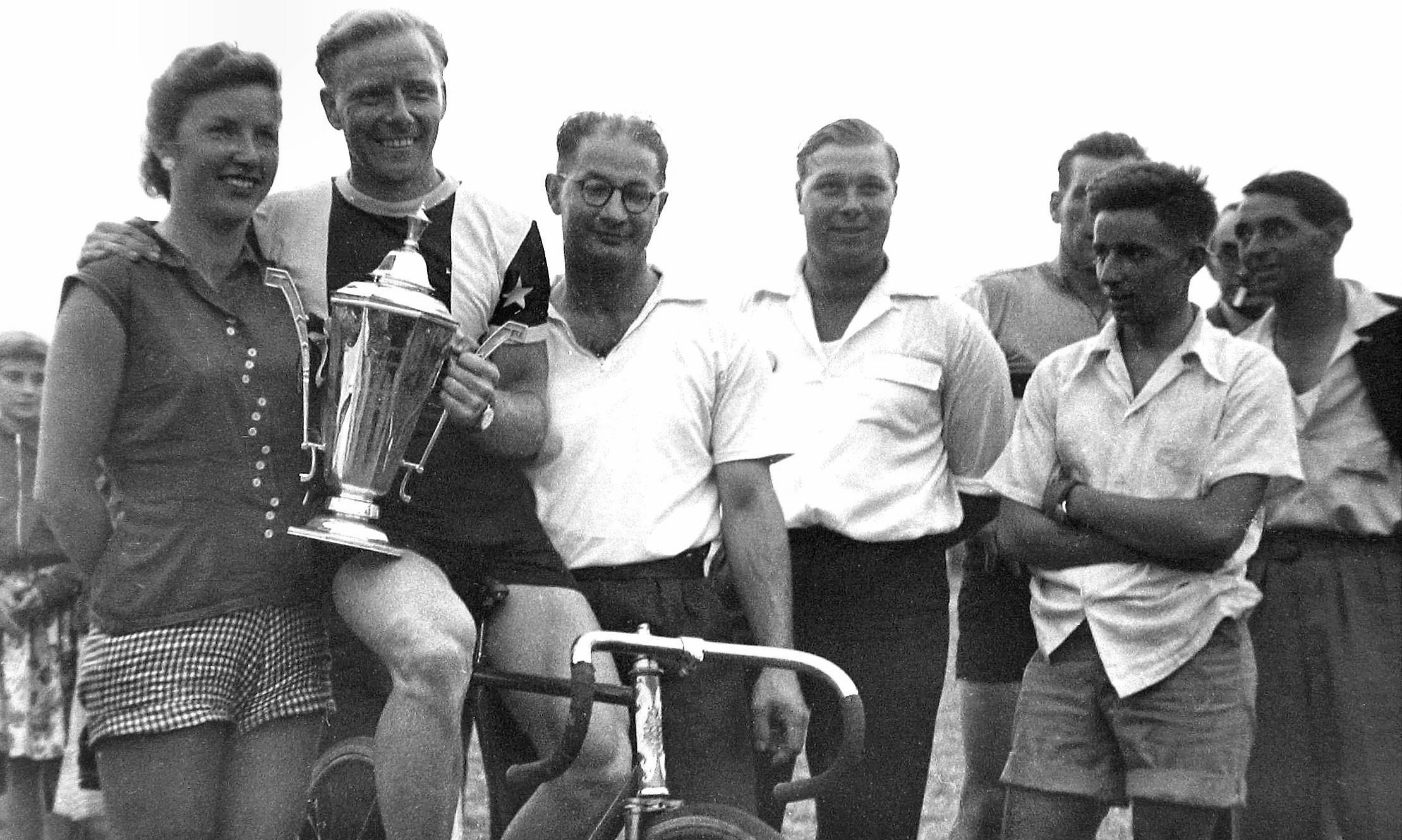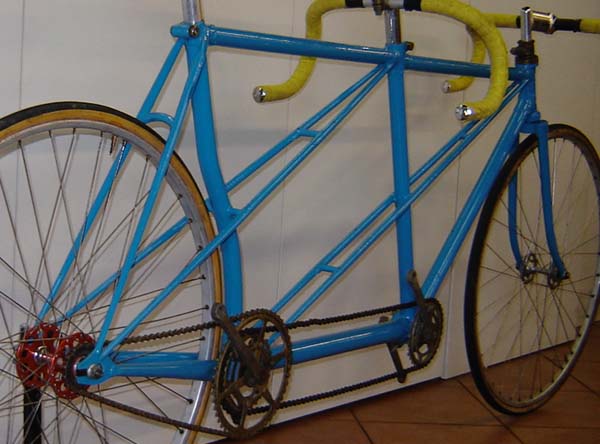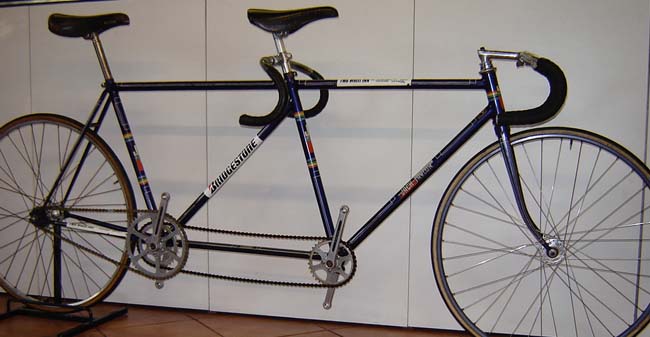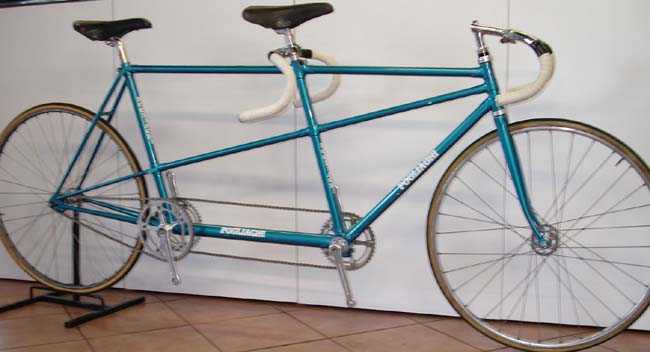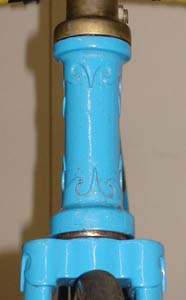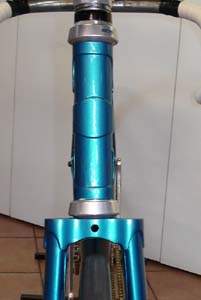Four 20th Century Track Tandems in Durban, South Africa
Posted: Sunday 23rd August 2020
The Competitive Background
Tandem competitions featured prominently in South African track cycling for much of the 20th century. As early as the 1920 Olympic Games in Antwerp, Belgium, the South African representatives:
James R. Walker and William R. Smith were placed third in the Tandem (sprint) event prior to which three of the (team’s) cyclists took part in the 50 miles British Tandem Paced Championships at the famous Herne Hill Stadium…Henry J. Kaltenbrun and James R. Walker rode the tandem, pacing William R. Smith and they won the title, despite the tandem crashing at 20 miles (W. Jowett, Centenary: A century of South African cycling, 1982, page 56).
Some 30 years later, at the 1952 Olympics in Helsinki, Finland, the South African tandem pairing of Ray Robinson and Tommy Shardelow won silver medals in the 2 000 metre tandem sprint event in which the Australian team of Mockridge and Cox took the gold medals.
Later in that same year a six–man British track team (comprising Tommy Godwin [captain], Lloyd Binch, Wally Box, Don Burgess, Alan Geldard and Ken Mitchell) toured South Africa, with the pairing of Godwin and Binch contesting tandem sprint events against the Springbok partnership of Johnny Ramsay and Rudi Vorster. In both of the two cycling ‘test matches’ as they were then dubbed – one held in Johannesburg and the other in Paarl in the Cape – the South African tandem pair emerged triumphant (W. Jowett, Centenary: A century of South African cycling, 1982, pages 62–3).
Ramsay and Vorster were both from Durban where they were leading members of the Mayville Cycling Club, being the national 2 000 metres tandem sprint champions in 1950 and 1951 – more on this later. The Jowett book lists the winners of the 2000 metre Tandem South African National Track Championship for every year between 1949 and 1981. (2)
But with tandems playing such a significant role in 20th century competitive track cycling in South Africa, what of the tandem machines themselves? Even after lightweight frames first began to be manufactured locally in the 1950s, the production was restricted almost entirely to solos (3). Where, then, did the track tandems ridden in South Africa and by South Africans racing abroad during this period come from and what, from a technical viewpoint, were their characteristics?
A contemporary collection of four classic post World War 2 track tandems in Durban, South Africa, offers some tantalising insights and clues on these matters. This article explores leading features of these four machines.
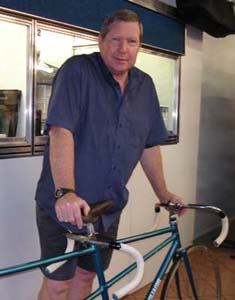
The Durban Track Tandem Collection
The Durban collection of track tandems has been gathered together by Dave Wiseman, himself both a former South African tandem sprint champion (with partner Ralph Smout in 1977) and Natal provincial track tandem champion (with various partners) on several occasions in the 1970s and 1980s. Dave is now a leading Durban lightweight dealer who retains a soft spot for tandems both past and present. His intimate knowledge of the nuances of tandem track racing, experience of the character of different ‘twicers’ under competitive conditions and his willingness to allow access to his tandem collection were what made this article possible.
The Tandems and their Provenances
The four tandems in the Durban collection – three British and one Italian – come from three of the acknowledged master tandem builders of the 20th century: Hobbs of Barbican, Jack Taylor and Sante Pogliaghi (4). Two of the machines are from the Jack Taylor stable although only one of these is in its original livery, the other having been retrofitted and resprayed as a ‘Peugeot’ in the 1970s when these were being manufactured locally under licence from the French parent company.
Both the Hobbs of Barbican and the Pogliaghi framesets have been repainted but only the latter bears the maker’s name, although its transfers/decals do not replicate the originals.
Years of Manufacture
According to local cycling lore, sometime around 1950 Durban’s Mayville C.C. (recall the Ramsay and Forster tandem partnership mentioned earlier) acquired two Hobbs of Barbican tandems, one of which is now in the Wiseman collection (image below).
This latter bears the number K83146 stamped on its left rear end which makes its date of manufacture November, 1948. The late1940s are generally regarded as the golden era of post–war Hobbs frame building.
The Jack Taylor/Peugeot frame bears the serial number 5976, indicating 1969 as its year of manufacture whereas the Jack Taylor in its original livery of dark blue flam with white box lining (#6059) and ‘Mondrian’ transfers dates from 1970. The Pogliaghi, serial number PSM 8085, is more difficult to date exactly but was built in the period 1968–1970 and probably in 1969.
The two Jack Taylors and the Pogliaghi are therefore contemporaries whereas the Hobbs is some 20 years older than these. From the vantage point of 2010, the former three are all around 40 years old while the latter is a venerable 62!
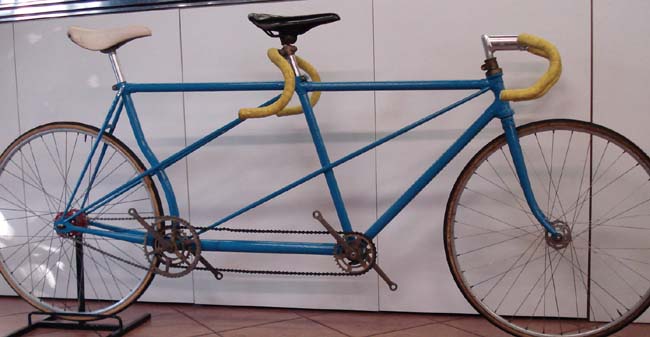
Frame Models
The Hobbs brochure for 1949 lists two different tandem models as being available: the ‘Superbe’ and the ‘Racelite’. From the details in the brochure, the Durban tandem emerges as a ’Superbe’ in that it is a lugged frame with double twin lateral stays, the rear twin laterals extending to the rear ends. It has a curved rear seat tube making for an ultra short wheelbase. According to the 1949 brochure, the ‘Path’ model of the ‘Superbe’ complete with sprints and tubulars was available at a price of ₤75 7s 8d.
The Jack Taylor model is listed simply as ‘Track Tandem’ but ‘specially designed for use in the Olympics’. Both the Durban JTs are lugless as per the works listing and, while there was an option of either ‘double diamond’ or twin laterals the Durban machines are both double diamond.
The Pogliaghi ‘Italcorse’ 1960s brochure lists the track tandem as the ‘Olimpionico’ model using Columbus tubing as standard but available in ‘Reynold’ [sic] as an option on request.
Materials and Construction Methods
All four are of course steel frames. The original–finish Jack Taylor carries Reynolds 531 plain gauge transfers (Reynolds made this tubing especially for JT) and another stating ‘Model Track’. It is assumed that the JT/Peugeot uses the same materials.
The Hobbs and Pogliaghi remain puzzles in so far as their tubing is concerned as no transfers survive. The former could well be manufactured in Accles & Pollock ‘Kromo’ tubing as a 1951 Hobbs advert for their use of this tubing coyly alludes to a track tandem recently built for ‘overseas riders’ – could this be the Durban machine?. Pogliaghi is distinctive amongst Italian frame builders in that he included Reynolds 531 as an option to his standard use of indigenous Columbus tubing. However, the Durban ‘Pog’ is probably his standard Columbus.(5)
In terms of construction methods, both of the Jack Taylors are lugless fillet brazed or ‘bronze welded’ frames whereas the Hobbs and the Pogliaghi are of lugged construction throughout.
The lugs on the Hobbs are decoratively cut – the 1949 brochure describes specially cast tandem lugs which were then hand cut in the elaborate and much–prized Hobbs ‘Superbe’ pattern. This is evident on the head lugs, both seat lugs and both bottom brackets (which also include twin oil ports) of the Durban machine.
In comparison, the Pogliaghi lugs are ‘industrial’ or plain at best. The head tube of the Pogliaghi is distinctive in that it is bisected by a third lug which accommodates the single lateral tube which runs to lugs located on both seat tubes.
Frame Designs
Every bike needs a degree of lateral stiffness so it can resist the twisting motion caused by your pedalling and keep the wheels pretty much in line…pedalling power would be wasted flexing the bike rather than turning the rear wheel. Pedalling, and particularly pedalling hard puts a great deal of torsional, twisting forces through a bike frame.
Cycling Plus, ‘If it ain’t stiff’ (April 2004, pages 31–2)
Whereas the diamond format has remained the standard frame design for solo bicycles for all manufacturers since the early 20th century, tandem frame formats have continued to vary to the point where no two tandem frame builders seem to follow the same pattern.
Undoubtedly this is related to the unique tandem problem of accommodating the weight and power of two riders in an ergonomically effective way suspended between two wheels revolving in the same plane. Implicit in many tandem adverts and brochures are ‘theories’ of how these problems are best solved. Track racing tandems are distinctive in that they need to prioritise lateral stiffness (measured by the ‘modulus of elasticity’) in their design in order to maximise the transmission of pedalling power to the rear wheel.
The four Durban tandems exhibit three different frame format solutions to this problem, implying differing theories concerning it:
- Both the Jack Taylors, as already indicated, have a double diamond format with an oversized ovalised bottom tube joining the two diamonds.
- The Hobbs, in addition to the curved rear seat tube, has braced double twin lateral stays, the front pair running from the top head lug to the rear bottom bracket, the rear pair running from the front seat tube lug through to the rear track ends. In addition, an oversized round tube connects the front and rear bottom brackets.
- The Pogliaghi has a single lateral tube running from a lug in the centre of the head tube to a lug midway on the front seat tube and then on from this lug to a lug point two–thirds down the rear down tube. Struts run from this rear lug to each of the two rear track ends. An oversize round tube connects the front and rear bottom brackets.
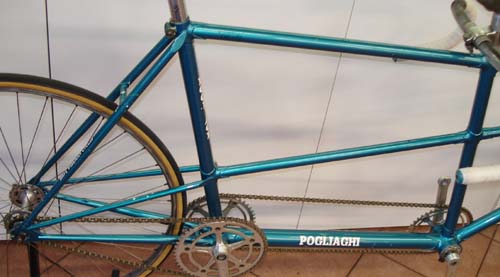
All three builders thus appear to agree that an oversized lower horizontal tube connecting the front and rear bottom brackets is mandatory for lateral stiffness. On the Hobbs and the Pogliaghi, a third bracing tube in addition to the chain and seat stays is an integral part of each side of the rear triangle whereas on the Jack Taylors the rear triangles are simple chain and seat stay assemblies. The former two builders would therefore appear to agree on the necessity for further strengthening of the tandem rear triangle. The Hobbs, with its twin front lateral tubes running from the head lug to the rear bottom bracket provides additional lateral stiffness to this area which is of critical importance for the efficient transmission of the final drive to the rear wheel.
The front fork crowns on all four machines are substantial, being decidedly ‘oversize’ and ‘industrial’ when compared with those on solos. Similarly, the fork blades on all the machines are substantial, with those on the Pogliaghi being round and lined with external stiffeners below the crown (although, surprisingly on a pure track machine, the crown has a brake hole drilled in it as does the bridge on the rear seat stays).
Transmission Systems
The Hobbs tandem appears to have its original ‘in–line’ transmission system, with a 32 tooth right hand front chain wheel and a double chain wheel (32 inner, 48 outer) on the rear bottom bracket. The original–finish Jack Taylor follows the same in–line system (35 x 35 inner rings; 53 outer).
The Pogliaghi, however, has ‘cross–over’ drive, with the 44 tooth front chain ring on the left connected to a left rear 44 tooth chain ring, with the final drive to the rear wheel being from a right sided single 51 tooth chain ring at the rear. The JT/ Peugeot has been retrofitted with a cross–over drive (48 x 48 x 52). This cross–over drive is also found on Cinelli track tandems and thus appears the preferred Italian pattern as opposed to the in–line system favoured by the British.
All four framesets have eccentric front bottom brackets facilitating the tensioning of the front timing chain. (7) (The eccentric bottom bracket unit on the Hobbs has traces of red flam paint which may well be the remnants of the original finish – possibly Hobbs’ ‘Magenta Electrique’). All four machines have…› inch chains both front and rear.
The Hobbs has cottered 6½ inch steel cranks and (probably) Williams› inch chain wheels; the original Jack Taylor has TA 165mm cotterless cranks while both the Pogliaghi and the JT/Peugeot have 165mm Campagnolo cotterless track chain sets fitted.
The cross–over drive system favoured on Italian machines could well be determined by Campagnolo…› inch track chainsets typically being produced in single rather than double format (although with this system the pedals on the left–sided chain wheel/crank ensembles require left handed threads).
On track tandems especially, efficient and reliable transmission systems are essential.
The front drive ‘timing chain’ requires two equal–sized chain rings to provide a neutral link to keep the pedalling of both riders in sync. The rear final drive – rear chain, rear chain wheel and rear wheel sprocket – as on solo machines determines the final gear ratio.
On the four Durban tandems it is noteworthy that the oldest machine, the Hobbs, has the smallest front drive chain wheels of all (32 X 32), followed by the JT original (35 x 35), Pogliaghi (44 x 44) and the modified JT/Peugeot (48 x 48).
Transmission technology and metallurgy improved over the period spanned by the four machines: in the Hobbs’ era, steel chain sets were still the norm along with cottered steel cranks; subsequently, machined alloy rings and alloy cotterless cranks became standard. The latter were both more precise and resistant to distortion under pedalling pressure and the rings easy to change to obtain different final drive gear ratios.
Adding to the complexity of tandem transmissions, especially on track racing tandems, is inevitable frame flex under pedalling pressure which affects the tensions of both the front timing chain and the rear drive chain.
The small size of the Hobbs’ front timing chain wheels was probably an attempt to maximise their rigidity. However, according to Rob Van der Plas in The Bicycle Repair Book (1986, page 59) ‘I’d say 36 teeth is a minimal size to guarantee smooth operation and low wear’.
The fixed 48 outer ring on the Hobbs would also restrict the final drive ratio to 108” even with a 12T rear sprocket. In contrast, the JT/Peugeot is currently fitted with 52 x 12=117”.
According to Dave Wiseman, competitive track tandem gear choices typically range between 108” and 118”, depending on circumstances. Given that individual track sprinters ride gears in the ‘nineties’ and solo road bikes commonly use 53×12 (118”), tandem gear ratios are surprisingly modest.
Table 1. Frame dimensions (in millimetres)*
| Hobbs | J T (original) | J T / Peugeot | Pogliahgi | |
| Wheelbase | 1560 (61½) | 1610 (63½) | 1620 (64) | 1600 (63) |
| Seat tube (f) | 560 (22) | 540 (21½) | 540 (21½) | 560 (22) |
| Seat tube (r) | 540 (21½) | 540 (21½) | 540 (21½) | 550 (21¾) |
| Top tube (f) | 580 (23) | 560 (22) | 550 (21¾) | 550 (21¾) |
| Top tube (r) | 570 (22½) | 570 (22½) | 580 (23) | 540 (21½) |
Approximate inches equivalents in brackets
In terms of size, taking the front seat tube (centre of bottom bracket to top of top tube) as the indicator, all four frames emerge as being of similar size with both the Hobbs and Pogliaghi being 560mm (about 22 inches) and the two Jack Taylors both 540mm (about 21½ inches).
The most notable difference lies in the wheelbases, with the Hobbs being the shortest (1560mm) and the Jack Taylor/Peugeot the longest at 1620mm – a difference of some 2½ inches. The Hobbs is the only one of the four with a curved rear seat tube, facilitating the shorter wheelbase (the 1949 Hobbs catalogue claims that their tandems achieve ultra short wheelbases approximating to 60 inches with head tube, front seat tube and back seat tube angles of 74–72–70 degrees, respectively). In theory, the shorter the wheelbase the greater the tandem’s manoeuvrability.
Of the four, the Pogliaghi, despite having a 560mm front seat tube, has short top tubes (550mm front; 540mm rear), making the stoker’s position the most cramped of the four, presumably to accommodate the 1600mm wheelbase. According to Hilary Stone (‘Classic Lightweights’ website), Jack Taylor tandems had 73 degree head angles and fork rakes of 65mm as this ‘…makes for a tandem less affected by leaning’.
Thus while at a casual glance all four of the tandems may appear to have similar dimensions, there are many subtle differences between them resulting in very different ‘feels’ when ridden.
Equipment on the four tandems
Given that all four tandems (with a combined age of more than 180 years!) have been extensively raced down the years by many and varied pairs of riders, it is highly likely that much of their current equipment is the result of extensive retrofitting – innumerable incremental adjustments, modifications, replacements and changes. Determining what is original equipment and what is not is therefore at best informed guesswork.
All four machines have steel handlebars of the track variety as well as steel front extensions and steel clamps on the front seat pins for the rear ‘bars. The JT original has a Cinelli stem and on the Pogliaghi the bars and stem are both Cinelli. The saddles clearly come from a variety of eras – on the front of the Hobbs there is a plastic Unica Nitor from around 1960 while the others sport assorted saddles of later vintage.
The wheels on the tandems are equally varied: on the Hobbs, the front wheel has 36 spokes while the rear has 40 spokes and a red Airlite large–flange hub; the Pogliaghi’s current wheels are 32 x 36 on Campag large flange hubs; both the JTs have 36 x 36 wheels on Campag large flanges. All have sprint rims, the Pog. Mavic, the two JTs Fiamme while the Hobbs’ rims bear no distinguishable markings. All are built with heavy gauge spokes and shod with tubulars, Dave Wiseman recommending Clément No.10s pumped to 10 bars (140 lbs.psi).
Table 2. Leading characteristics of the four classic tandems
| Hobbs of Barbican | Jack Taylor original | Jack Taylor/Peugeot | Pogliaghi | |
| Country of origin | UK (Dagenham, Essex) | UK (Stockton–on–Tees | UK (Stockton–on–Tees) | Italy (Milan) |
| Frame number | K83146 | 'Track' | 'Track' | Italcorse ‘Olimpionico’ |
| Model | ‘Superbe’ Track/Path | 6059 | 5976 | PSM 8085 |
| Date of manufacture | 1948 (November) | 1970 | 1969 | 1968–1970 (1969?) |
| Tubing | Accles & Pollack ‘Kromo’ (probably) | Reynolds 531 plain gauge ‘Model Track’ | Reynolds 531 plain gauge ‘Model Track’ | Columbus oversize track (probably) |
| Tube joints | Handcut ‘Superbe’ lugs | Fillet brazed/bronze welded lugless | Fillet brazed/bronze welded lugless | Pogliaghi handmade lugs |
| Frame format | Twin laterals 74–72–70 angles | Double diamond 73 head, fork rake 65mm | Double diamond 73 head, fork rake 65mm | Single lateral, twin rear struts |
| Rear seat tube | Curved | Straight | Straight | Straight |
| Rear triangle | Braced by rear laterals | Seat stays & chain stays only | Seat stays & chain stays only | Braced by struts |
| Bottom tube | Oversize round | Oversize oval | Oversize oval | Oversize round |
| Transmission | In–line, eccentric bb | In–line, eccentric bb | Cross–over, eccentric bb | Cross–over, eccentric bb |
| Chainwheel sizes | 32x32x48 (cottered) | 35x35x53 (cotterless) | 48x48x52 (cotterless) | 44x44x51 (cotterless) |
| Wheelbase | 1560mm | 1610mm | 1620mm | 1600mm |
| Finish | Blue respray, No decals | Dark blue flam original, white box lining (Mondrian) | Blue respray, ‘Peugeot’ decals | Blue respray, ‘Pogliaghi’ decals (not facsimiles) |
Racing the four classic tandems
Closely examining the four tandems in stationary mode stimulates an appreciation of the finer points of both their underlying design philosophies and the craftsmanship involved in their construction – the sheer number of hours of skilled labour required in each case to move from the initial concept to the finished product is mind–blowing. However, the four Durban tandems have amply repaid these efforts by being extensively used for the purpose for which they were expressly designed and built: track racing and match sprinting in particular. Several bear the battle scars of this in the form of various minor dents and scrapes, but all the frames remain true, in line and – subject to some fettling – race ready.
Viewing track tandems in full flight being raced by experienced and well–matched partners is a spectacular sight – a combination of high speed and graceful manoeuvring tinged with ever–present risk and danger. This was certainly the case on the longer tracks of the past.(8) It therefore seems fitting to conclude this article with a consideration of the racing qualities of the four Durban classic track tandems.
Dave Wiseman has ridden on the front as captain on all four of the machines in his collection and raced extensively as captain on both the Hobbs and the JT/Peugeot. A fount of tandem lore and wisdom (and of tandem sprinting’s darker arts), Dave even retains his wrecked rear wheel from a high speed tandem tubular tyre blow out and resulting crash as a salutary reminder of the perils involved.
It is his considered opinion that the Hobbs is far and away the most rigid of the four and therefore ideally suited for track racing. However, the transmission on the front timing chain – possibly because of the small size of the chain wheels (both 32 teeth) – is less than ideal in terms of smoothness. In comparison, he describes the general ‘feel’ of the JT/Peugeot (on which he won a national title) as being ‘sloppy’ – perhaps because of the combination of it being lugless, having a double diamond format and lacking a third brace to the rear triangle. He sees the Jack Taylor original, which is identical in all these respects, in a similar light. In Dave’s view, the Pogliaghi falls somewhere between the Hobbs and the two Jack Taylors in terms of lateral stiffness. Overall, therefore, in terms of race–worthiness, he rates the Hobbs tops (albeit with reservations about its transmission system) followed by the Pogliaghi and then the two Jack Taylors.
However, experience teaches us that just as riding styles vary so too do the ride characteristics of different quality lightweights and thus a machine which suits one rider perfectly may be anathema to another. In short, the best bikes are ones with unique and quite often quirky individual ‘personalities’. Who does not have a favourite amongst the various machines ridden down the years (as well as remembering incorrigible delinquents)? The compatibility between riders and machines is compounded on tandems by variations in the partners’ heights, weights and pedalling styles and, ultimately, by how effectively they ‘nick together’ as a pair.
Whatever the case, the four track tandems in Dave Wiseman’s collection exemplify the 20th century industrial art of lightweight steel tandem track bicycle building at its very best. From our 21st century vantage point, besotted as it is with post–steel framed bicycles of all types, they deserve to be viewed with respect and not a little awe.
Notes
The images which accompany this article were kindly taken by my good friend, Radhamany Sooryamoorthy.
- Curiously, track tandem sprinting (usually involving two tandem pairs but occasionally ‘three up’ contests especially in ‘repecharges’) remained prominent in South Africa late into the 20th century despite the 2 000m tandem sprint event being dropped from the Olympics in 1972 and from the UCI World Championships in the late–1970s. Perhaps its persistence was induced by sporting isolation: South Africa was excluded from the 1964 Olympics onwards because of apartheid in sport and the South African Cycling Federation (SACF) was suspended by the UCI in 1970. South African riders were therefore isolated, excluded from participating in international events until the1990s by which time tandem track sprinting had sadly long since disappeared as an Olympic, Commonwealth Games and Worlds event.
- Peugeot bicycles, when manufactured locally under license in the 1970s, did produce French–style ‘lady–back’ touring tandems in small numbers. I once had the misfortune to ride as a stoker on one of these. It proved an unnerving experience due to a combination of frame whip, woefully inadequate brakes and a piratical captain/pilot who seemed hell–bent on either dropping me or killing us both in the attempt.
- The Hobbs brothers began building frames in the Barbican area of London in the 1930s. The site was destroyed by World War 2 bombing and the firm reopened after the war in Dagenham, Essex and continued frame building under the name ‘Hobbs of Barbican’ until it closed down in 1953. Jack Taylor Cycles was located at Stockton–on–Tees in north–east England and was operated by three brothers (of whom Jack was one) between 1936 and 1990 (see the ‘Classic Lightweights’ website for further details on both these British frame builders). Sante Pogliaghi was a noted post–World War 2 Italian frame builder based in central Milan who retired in the mid–1980s. (The ‘Pogliaghi’ brand name was continued by Rossin and subsequently by Basso. Pogliaghi himself died in the year 2000). With his workshop close to the Vigorelli velodrome, Pogliaghi was renowned for building both solo (sprint, pursuit and motor–paced) and tandem track machines. To quote from the ‘Classic Rendezvous’ website: ‘His speciality, however, is the competition tandem. The lugs are hand made by Pogliaghi himself. Since Columbus build custom large–diameter tandem tubes for Pogliaghi he is unable to use standard lugs…’ He built solo track frames for numerous professional riders (including Jacques Anquetil [hour record machines, 1956 & 1967], Danny Clark [Australian 6–day rider] Belgian and world champion sprinter Patrick Sercu in the 1960s,and reputedly also for Merckx) but as these were invariably finished in trade team liveries the true extent of his output is unknown.
- When I visited Pogliaghi in his Milan workshop in the mid 1970s he was completing the assembly of a US order of a road tandem in mirror–like chrome with ‘Pogliaghi celeste’ panels – a shade more intense than the classic Bianchi colour. It was built in Reynolds 531 tubing and his willingness to use it may have been dictated by the preferences of Anglophone customers. In his last years as a constructor Pogliaghi also built some track frames using Swedish ‘Lepo’ steel tubing (advertised in Deale & Huth, Johannesburg, ‘Catalogue A’, 1976). In this latter period he took on a few additional staff whereas previously he had employed only a young teenage boy as a general workshop factotum.
- Cinelli, also based in Milan, was the other noted Italian track frame builder of the latter half of the 20th century. Cinelli track tandems were ridden successfully at UCI world championships and Olympic Games by many pairings from the eastern bloc – USSR, Poland, Czechoslovakia – in the 1960s and 1970s. During a visit to the Cinelli works in that period I was shown various tandem framesets then under construction (See: ‘Classic Rendezvous’ website Cinelli entry for further details).
- The mechanical importance of the eccentric bottom bracket assembly cannot be overstated especially on track tandems because of the high speeds attained and associated stresses, as it facilitates correct tensioning of the front timing chain. The eccentric part requires a special bottom bracket shell – usually split – to facilitate ready but secure adjustment. Great care needs to be taken in adjusting the tension of the front timing chain as frame flex under riding and especially racing conditions affects this. If the timing chain is set too slack the chain could derail; too tight and it could bind and possibly break. The same is of course also true for the rear drive chain. In either case, the consequences of a derailed or broken timing and/or drive chain at speed can be catastrophic. (In Britain in the late1900s, Ken Rogers of Hounslow, London specialised in the manufacture of eccentric tandem bottom bracket units along with differentials and conversion kits for racing tricycles. I once enjoyed a highly informative technical discussion on these matters with the Rogers’, père et fils, on a train journey from London to a cycle show in Harrogate).
- From the 1980s onwards the trend, supported by the UCI, has been to build shorter (preferably indoor) tracks of 333 metres or less, particularly for Olympic Games, world championships and world cup meetings which, of course, no longer include tandem events (Paracycling championships and the Paralympics are notable modern exceptions). These short, steeply–banked tracks are not suited to full–blooded tandem match sprinting which is best served by longer tracks with shallower bankings. These allow speeds to be wound up and provide sufficient space to encourage the intimidatory stationary ‘surplace’/ ‘track stand’ as well as facilitating daring feints and tactical jockeying manoeuvres at speed.
Posted: Sunday 23rd August 2020
This article appears in the following categories.
Upcoming Events
Whether you are looking for a gentle social meet up, or a 100-mile ride browse the community’s upcoming events and plan your next weekend outing.
